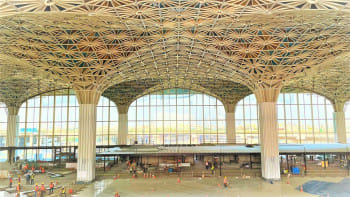Floodwaters recede, but suffering of northern people persists

Floodwaters along the Teesta and Dudhkumar river basins have receded, but families in Kurigram, Lalmonirhat, and Rangpur are still grappling with severe hardships.
Many who returned home after spending weeks in shelters found their croplands buried under sand, houses damaged, and livestock lacking sufficient fodder.
Strong currents left deep pits in homesteads and yards, while poultry, goats and cattle were washed away in several areas.
Agriculture officials said Aman paddy largely survived the flood, but vegetable fields were devastated.
Abdullah Al Mamun, deputy director of the Department of Agricultural Extension in Kurigram, said Aman may even benefit from fresh silt deposits.
"Vegetables suffered some damage, but on a limited scale. Where sand accumulated, farmers can still find fertile silt beneath if it is cleared," he said.
Water Development Board officials also warned of riverbank erosion in several areas.

"The flood situation has improved, with water flowing below the danger mark since yesterday. However, erosion may occur as waters recede," said Shunil Kumar, executive engineer of the board in Lalmonirhat.
For many farmers, however, recovery seems uncertain.
"One of my goats and several ducks and chickens were washed away. I am now struggling to feed three cows and six goats, as all the grass in nearby fields has died," said Soleman Ali, 60, of Char Ichli village in Rangpur's Gangachara upazila.
In Lalmonirhat's Hatibandha upazila, 65-year-old Sukchan Bewa said her house was left in ruins.
"The fence and door of my house were swept away, and a pit has formed in my yard. I don't have the money to repair my home. Even though the floodwater is gone, my suffering hasn't ended," she said.
Others pointed to mixed impacts on cropland.
Abdar Ali, 65, of Gangachara upazila, said five bighas of Aman paddy survived but his vegetable fields were destroyed.
"Floodwaters have receded from my homestead, but surrounding fields are still submerged, leaving no fodder for livestock," he added.
Farmers in Lalmonirhat's Aditmari and Sadar upazilas also reported both losses and gains.
While sand rendered some land infertile, new silt layers were seen as a blessing for future harvests. "Out of my nine bighas, one is buried under sand, but four have new silt deposits that will give bumper crops. Without floods, silt never comes to our riverbank lands," said Mobarok Ali, 68, from Gobardhan village.
The mixed picture was echoed by others also.
In Nageshwari upazila of Kurigram, farmer Mahesh Chandra Das said, "Six bighas of Aman remained under water for three days but survived. Half of my vegetables were destroyed. Still, the silt deposition will ensure a good yield this year."
While the waters may have gone, the struggle for recovery in northern districts has only just begun.

 For all latest news, follow The Daily Star's Google News channel.
For all latest news, follow The Daily Star's Google News channel. 



Comments